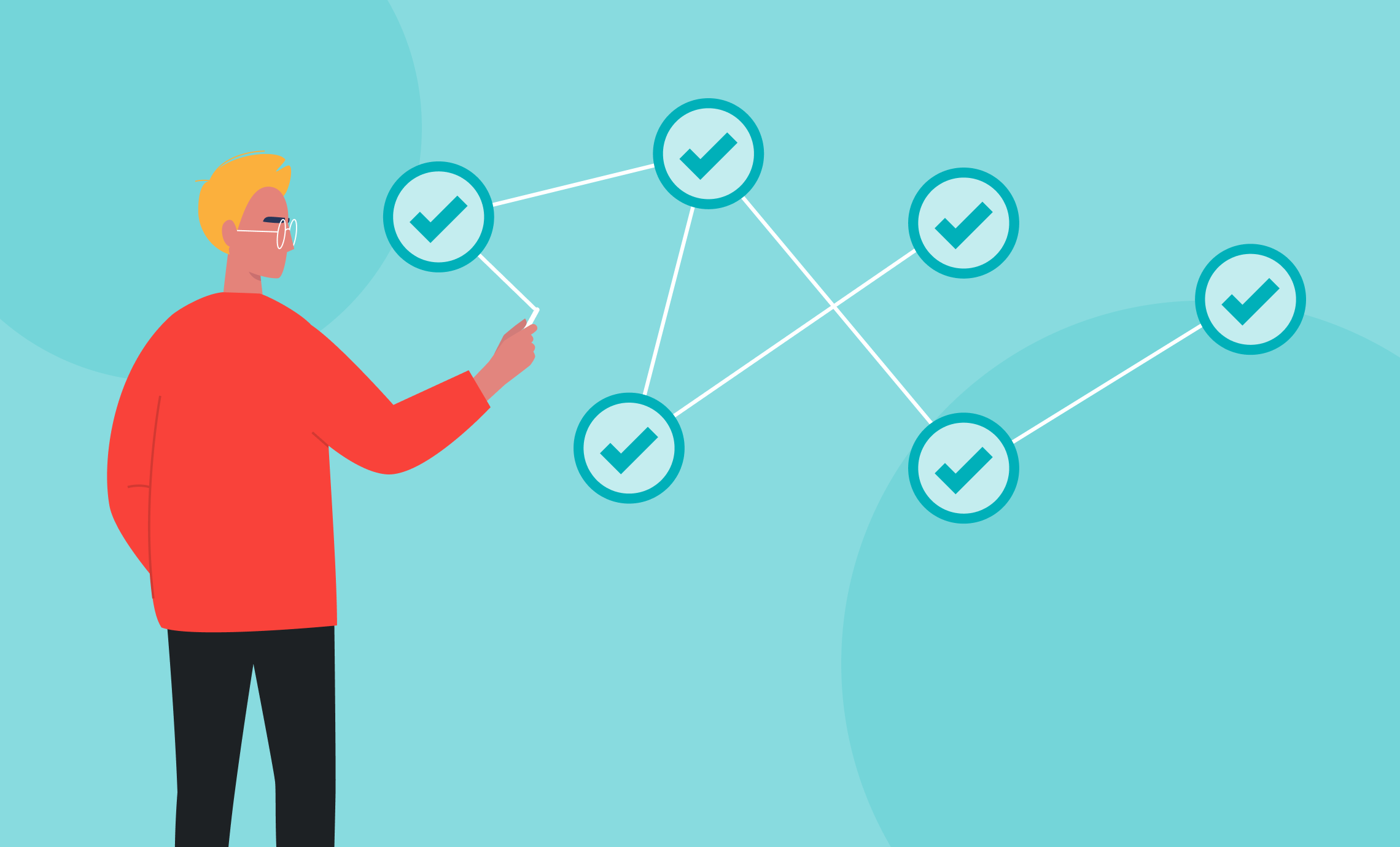Managing the data living in your membership management system is no easy task. While data management can be perceived as a mundane task that can be done at “some other time,” your data plays a vital role in both member engagement and member retention. An organization can’t survive without members, can it? And without accurate data, how can you expect to give your members the best experience and deliver the information that they need?
While data management may not be the project you want to jump into right away, there are some smaller changes you can make to ease yourself into it. Consider it like starting a healthy lifestyle.
Learn the business rules you can implement at your organization to ensure the data in your association management software is accurate, accessible, and actionable.
I was recently a bridesmaid, and unfortunately for me—the dress was a little too snug. And by snug, when I sat down—it was hard to breath, and I knew there wouldn’t be enough room for me to eat all the food (most importantly the cakes) at the reception. Instead of spending more money on alterations, I decided to make a conscious effort in what I ate in the weeks leading up to the wedding. (And no, it wasn’t a diet because I don’t believe in those.)
By incorporating small, actionable changes into my daily life, I realized there was a real possibility I’d be wearing that dress in no time and not feeling as if I were wearing a corset. I discovered that this was more doable instead of going cold turkey on certain foods. Moderation was key, and it was possible to eat the foods that I love. And I learned that a similar approach can be taken with data management at your organization.
Here are 4 ways to manage the data in your membership software and give your organization a database management makeover.
1. Eliminate the bad data
So how does this relate to eating healthy, you ask? Well, when you make the decision to change your eating habits, one of the things you need to do is cut back on the “bad stuff.” Sweets, fried foods, carbs, etc., they have to go! (Bear in mind—I’m not a dietician nor am I a nutritionist.)
I have a huge sweet tooth, but I didn’t want to cut myself off completely from sugar. For one thing, that is almost impossible because you realize how many foods contain added sugars. Secondly, was I also eliminating foods with natural sugars, such as fruits and nuts? If I gave up both, then I’d be extremely limited in what I could eat so I decided that abstaining from foods with added sugars on the weekdays would suffice. By pinpointing what I needed to change in my eating habits, it made grocery shopping and meal planning easier because I knew what foods not to buy.
When you’re examining the data in your database management software, you need to decide what you and your staff consider to be “bad data.” Once you’ve determined what that bad data is, you can develop a plan for getting rid of it. And this is a plan that you can continue to use to keep your data clean.
Bad member data can be equivalent to duplicate data, unfinished data, obsolete data, and just inaccurate data. It can be something as small as inputting the wrong state to misspelling a member’s name to accidentally altering your member’s membership status from active to inactive. Perhaps you’re sending a newsletter to members who unsubscribed from your emails. Or maybe your emails are bouncing simply because one letter is incorrect in a member’s email address. There are many more scenarios that can occur with bad data, but, simply put, poor data can be a recipe for disaster at your organization.
Removing bad data from your membership management system can be a time-consuming task if you haven’t performed a data cleanse in a long time. It’s better to tackle it before you let it get much worse. Develop a step-by-step plan of attack and follow through with it. Don’t expect to do it all on your own. Get your staff involved in this effort. Removing bad data shouldn’t be left to just one person because chances are more than one person is using that data and is reliant on it being accurate. It should be a team effort.
2. Develop a routine
About two months before the wedding took place, I decided to cut back on the sweets and carbs. I made it a point to eat healthy on the weekdays, so on the weekends I could treat myself. It was hard at first because giving up sweets and carbs on the weekdays left me feeling lethargic, but after the first couple of weeks, it became easier. Now that the wedding is over, I’ve decided to stick with it because I actually feel much better and have seen an improvement in my skin.
Once you’ve made the decision to remove the bad data in your system, you should schedule a regular audit of your data. This can be a monthly or quarterly check-up, but don’t leave it to be yearly project. You can accumulate a lot of data in a year, and it’s better to examine it on a regular basis so you and your staff won’t find yourself in the same place again. Ask yourself do you really need that record of an individual from 10 years back who is no longer a member of your organization? Why on earth do you have 2 records of the same member? Get rid of old records and merge duplicates.
A data cleanse is essential should your organization move to a new membership software. When a data migration takes place during a software implementation, it varies with every organization as to when the data cleanse should occur. Sometimes it’s before the implementation takes place and for others it makes more sense for it to occur afterward. Make sure to have this discussion with your implementation team to determine what is the best solution for you. This is also a great time to develop a plan to regularly keep your data clean and up-to-date.
To ensure you’re getting the most out of your database, we’ve compiled the questions that every IT manager at a membership organization is thinking about in our latest guide. Download our Database Management Guide!
3. Use the buddy system
In the weeks leading up to the wedding, the bridesmaids, who were in the same city, would go to work-out classes together, and we encouraged each other to stick with it because we all knew how important it was for us to feel good in our dresses. Sure, on the day of the big event, no one would be looking at us, and all attention would be focused on the bride, but why feel uncomfortable in anything you have to wear, even if it’s just for a day?
Managing the data inside your membership software shouldn’t necessarily be left to one person. While some organizations might have a database analyst who oversees the data, not every organization has one because it might not be feasible. And that’s okay! In that case, consider assigning one department ownership of the data and hold them accountable for maintaining and monitoring it. Data is only as useful as what you enter into your software system. And while managing it can be tedious, consider showing how having accurate data can help you achieve your organization’s goals and can empower your staff to make strategic decisions. And if that doesn’t convince them, then you might also consider bringing up how bad data has impacted a member’s experience with your organization. The last thing you want to do is give your members a negative experience leaving them to wonder why they even joined your organization in the first place! Don’t let your data in your membership software get to that state!
When the time comes for your organization to purchase a new membership management system, bear in mind that data migration will be one of the most challenging and time-consuming projects during the software implementation. Accountability will be extremely important during that time. If it makes sense for your organization, consider having your software vendor or an implementation consultant help with the data migration. Chances are this isn’t their first time tackling a data migration so you can lean on them for support and advice. Your team will still play a part though. Since this is your organization’s data, you know it best and can provide the vendor team information about the data and how you use it in your business.
4. Document your processes
One way to hold yourself accountable for eating healthy is to maintain a food diary. By seeing what you’re eating and drinking on a daily basis, you’ll identify patterns in your eating habits, and you’ll be able to see how you’re progressing. While eating a handful of cookies “every now and then” because you have the munchies might not seem impactful, when you see it in writing, you might discover that you eat them every day and multiple times a day. That all adds up.
Sometimes organizations realize a little too late that the data in their membership software is inaccurate and outdated. This can happen simply because staff didn’t have documented business processes in place for data management.
If your organization is looking to move to another software system, consider having a SOP (standard operating procedures). Data migration is a major project that occurs during a software implementation and having clean data will make this project less stressful for everyone involved. Having a regularly scheduled data cleanse will save you a lot of trouble during a software implementation and will help the data migration go smoothly instead of slowing it down.
If your organization hasn’t been documenting your procedures for data management, then a future association management software implementation is a good motivator for developing a data cleansing routine. And once you have performed a data cleanse, consider documenting it step-by-step so future staff members will know what to do. They might even be able to offer a better solution for data upkeep.
While automation certainly helps with managing your data, people still play an integral role in data quality and it’s up to your staff to develop a plan to continually maintain the data in your software system. It requires time and commitment just like eating healthy. At times, it can seem tedious, but the long-term results are absolutely worth it.
And in case you were wondering, did my changes work? I’m happy to report that they did, and I still had room in my dress to eat all the delicious food that was served at the reception.


